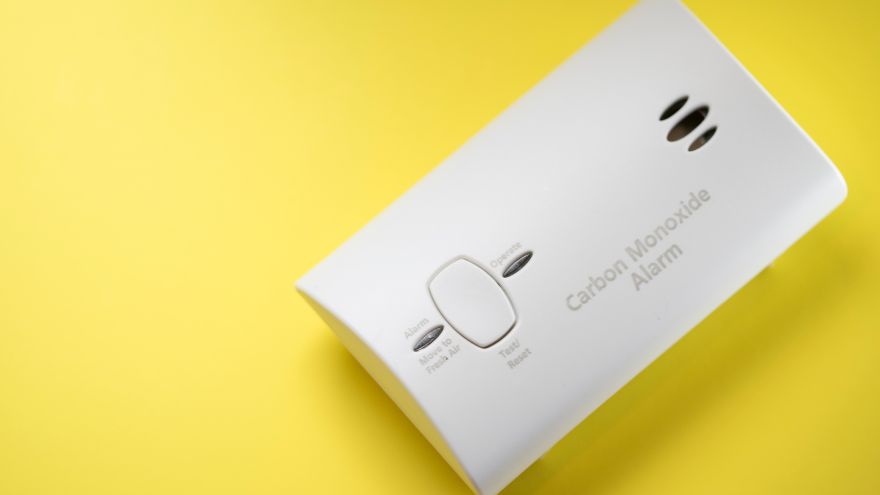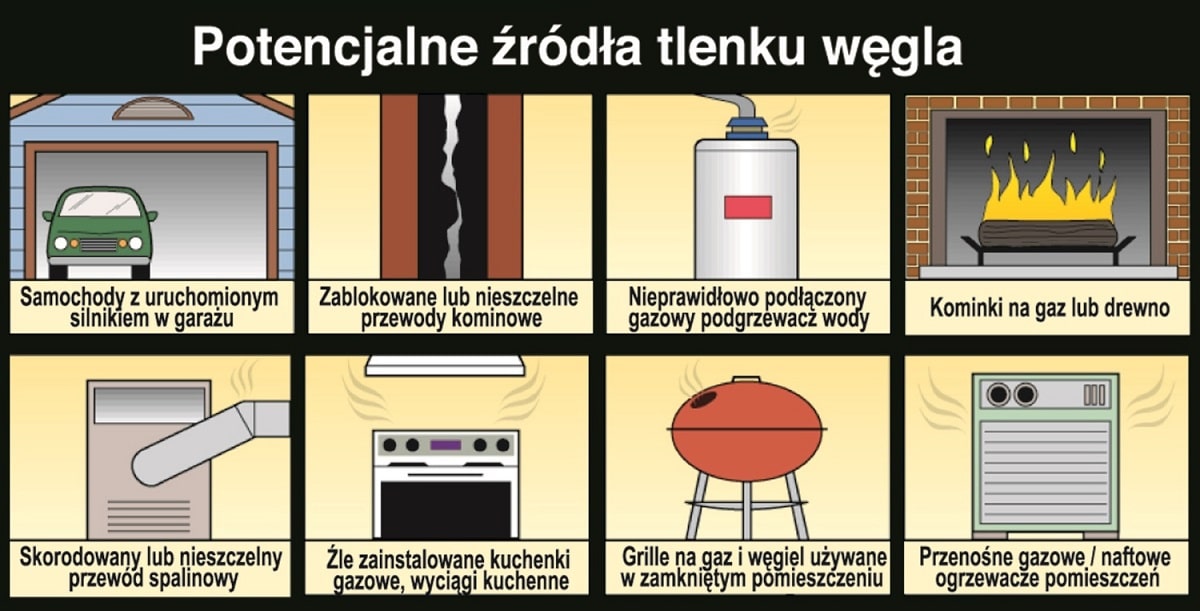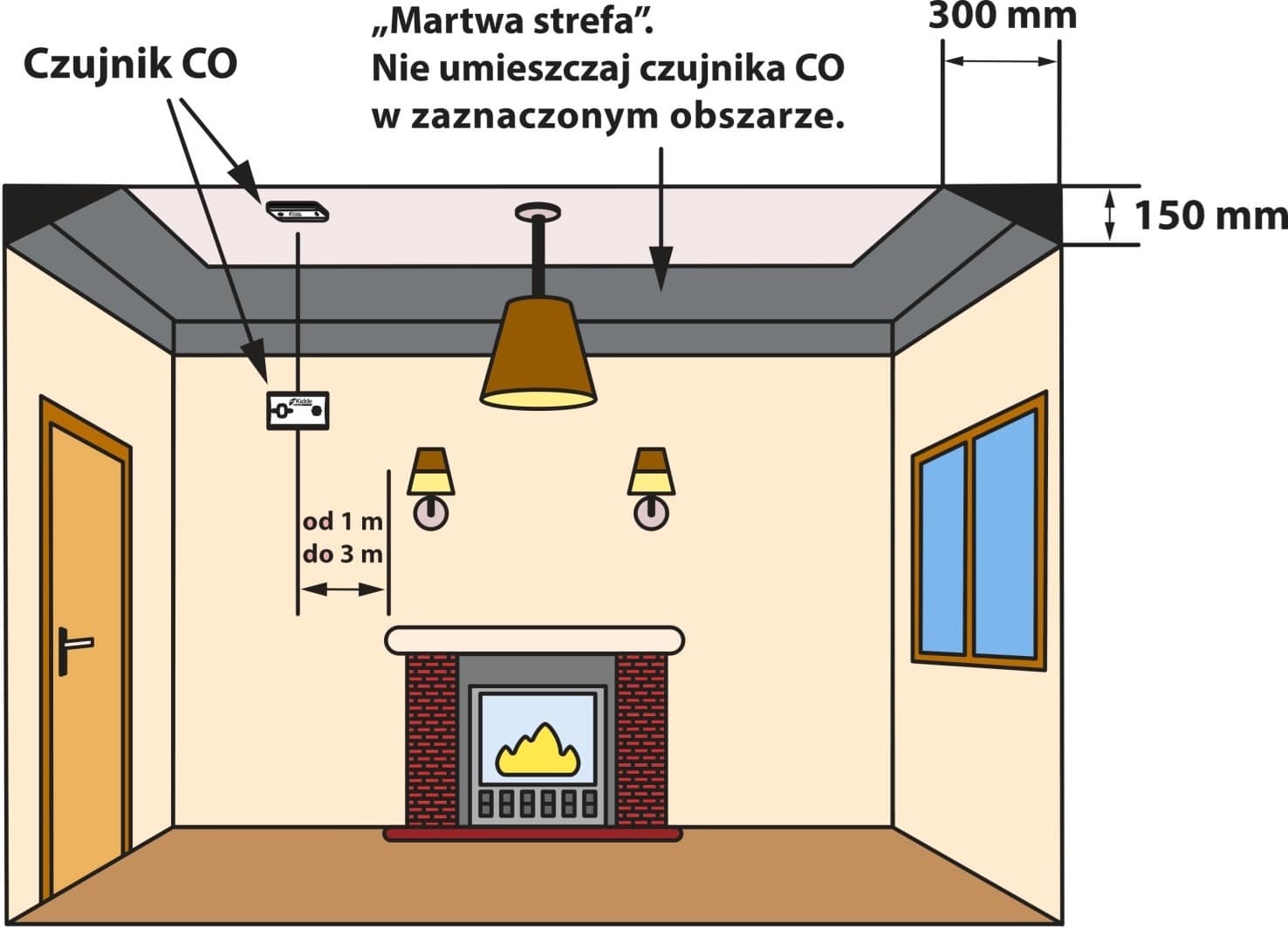It is said that carbon monoxide is a silent killer. Carbon monoxide cannot be seen, it is odorless. However, every fourth Pole still thinks that carbon monoxide can be recognized by its smell or smoke. Nothing could be further from the truth. How to protect yourself from carbon monoxide poisoning? You will find out in the article below.

What is chad?
Carbon monoxide, commonly called carbon monoxide, is highly poisonous. It is a colorless and odorless gas, so it cannot be smelled. It is lighter than air, which causes it to mix quickly and spread even faster around the room.
The vast majority of carbon monoxide poisoning, commonly known as carbon monoxide, occurs during the heating season. Therefore, it is particularly important to take actions during this period to reduce or even completely eliminate the risk of carbon monoxide poisoning. Unfortunately, in Poland, still few people are aware of the risks associated with using devices that burn fuel or fuel during their work.
Check carbon monoxide detectors at the Onninen wholesaler
In which rooms should a CO sensor be installed?
A carbon monoxide sensor should be installed in every room where there are devices emitting exhaust gases . Additional sensors should be installed in rooms where we spend a lot of time, e.g. in the living room, living room and all bedrooms. The installation of carbon monoxide detectors is especially recommended when people staying in these rooms - due to their location - may not hear the alarm signal from a sensor activated in another part of the building.
Rooms with fuel burning appliances
If there is a device with an open combustion chamber in the room that emits exhaust gases, e.g. a gas heater, fireplace, bio-fireplace, it is recommended to install a carbon monoxide sensor on the wall or ceiling due to the fact that carbon monoxide, which is part of the warm gas mixture, tends to rise until it cools down.
Rooms without fuel-burning appliances
If the carbon monoxide detector is to be installed in a room where there is no device emitting exhaust gases or in rooms located away from the above-mentioned devices, devices, it should be relatively close to the "breathing zone", i.e. at the level of the respiratory tract. For example, in the bedroom, the carbon monoxide detector can be placed on the bedside table or mounted on the wall at a height of approximately 1 meter from the floor. However, in the corridor, the carbon monoxide sensor can be mounted, for example, on the wall at a height of approx. 1.5 - 1.7 meters from the floor.

What produces carbon monoxide?
Chad can be released from many different sources. The most common ones include fires, broken furnaces, malfunctioning boilers and coal stones. In addition, faults in gas installations or incorrectly used fireplaces can also emit this dangerous gas. Carbon monoxide is also produced as a result of incomplete combustion of fuels such as gas, oil, gasoline, kerosene, propane, wood, coal and diesel fuel. Therefore, it is worth following safety rules and regularly maintaining and cleaning heating devices and gas installations. This allows you to minimize the risk of carbon monoxide poisoning.

Check carbon monoxide detectors at the Onninen wholesaler
How to avoid carbon monoxide poisoning?
The best solution is to install carbon monoxide detectors , which will allow for early detection of dangerous gas and taking appropriate actions. Carbon monoxide sensors are able to detect even small amounts of carbon monoxide and react to them immediately. It is also important to regularly inspect and maintain installations and devices that may be a source of carbon monoxide. It is worth remembering that any obstruction of the ventilation hole or imperfections in the installation of the device may result in serious consequences.
Installation of a carbon monoxide detector
Before installing the carbon monoxide detector , carefully read the manufacturer's instructions. If you have no experience in installing similar devices, it is worth using the help of professionals who will properly install the sensor and check its operation.
Wall mounting
If mounted on a wall, the sensor should be placed at a distance of 1 to 3 m (measured horizontally) from devices that may be a potential source of carbon monoxide emissions, above the upper edge of doors and windows, as close to the ceiling as possible, but no closer than 150 mm, to avoid its installation in the so-called "dead zone" in which air circulation is limited.
Ceiling mounting
In case of ceiling mounting, the sensor should be at least 300 mm from the wall to avoid installation in the so-called "dead zone".

Carbon monoxide detectors in the Onninen installation wholesaler
Kidde K5CO carbon monoxide detector
 K5CO carbon monoxide detector is equipped with an electrochemical sensor. It is battery-powered, so you can install it anywhere without having to connect it to an electrical outlet. The sensor signals the detection of carbon monoxide optically (red LED) and acoustically (loud, pulsating alarm sound). The device remembers the detection of CO concentration above 100 PPM, thanks to which the user can verify whether there was no carbon monoxide emission during his absence.
K5CO carbon monoxide detector is equipped with an electrochemical sensor. It is battery-powered, so you can install it anywhere without having to connect it to an electrical outlet. The sensor signals the detection of carbon monoxide optically (red LED) and acoustically (loud, pulsating alarm sound). The device remembers the detection of CO concentration above 100 PPM, thanks to which the user can verify whether there was no carbon monoxide emission during his absence.
Honeywell Home R200C-2 carbon monoxide sensor
 R200C-2 carbon monoxide sensor is battery powered. Its undoubted advantage is a 10-year service life and a sensor warranty. Thanks to the use of a low-power integrated circuit, the sensor can operate for up to 10 years in standby mode. If it detects a threat condition, it sends visual and audio signals. The sensor is equipped with an option to protect against unauthorized interference.
R200C-2 carbon monoxide sensor is battery powered. Its undoubted advantage is a 10-year service life and a sensor warranty. Thanks to the use of a low-power integrated circuit, the sensor can operate for up to 10 years in standby mode. If it detects a threat condition, it sends visual and audio signals. The sensor is equipped with an option to protect against unauthorized interference.
To sum up, carbon monoxide is a dangerous gas that can lead to tragedy. However, with appropriate precautions and knowledge, you can minimize the risk of its occurrence. All users of home gas or heating installations are recommended to install a carbon monoxide detector , frequent inspections and attention to safety. Thanks to this, you can avoid unnecessary tragedies and guarantee a good night's sleep.
